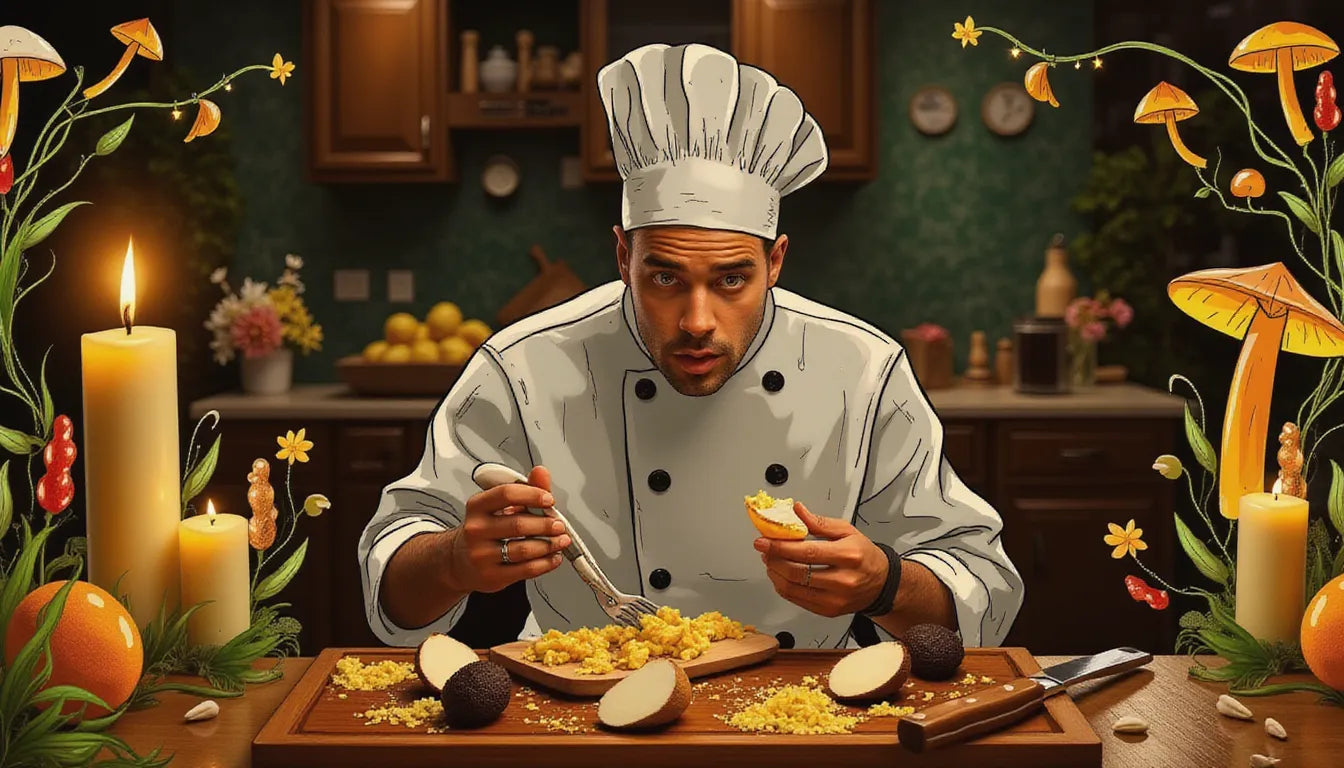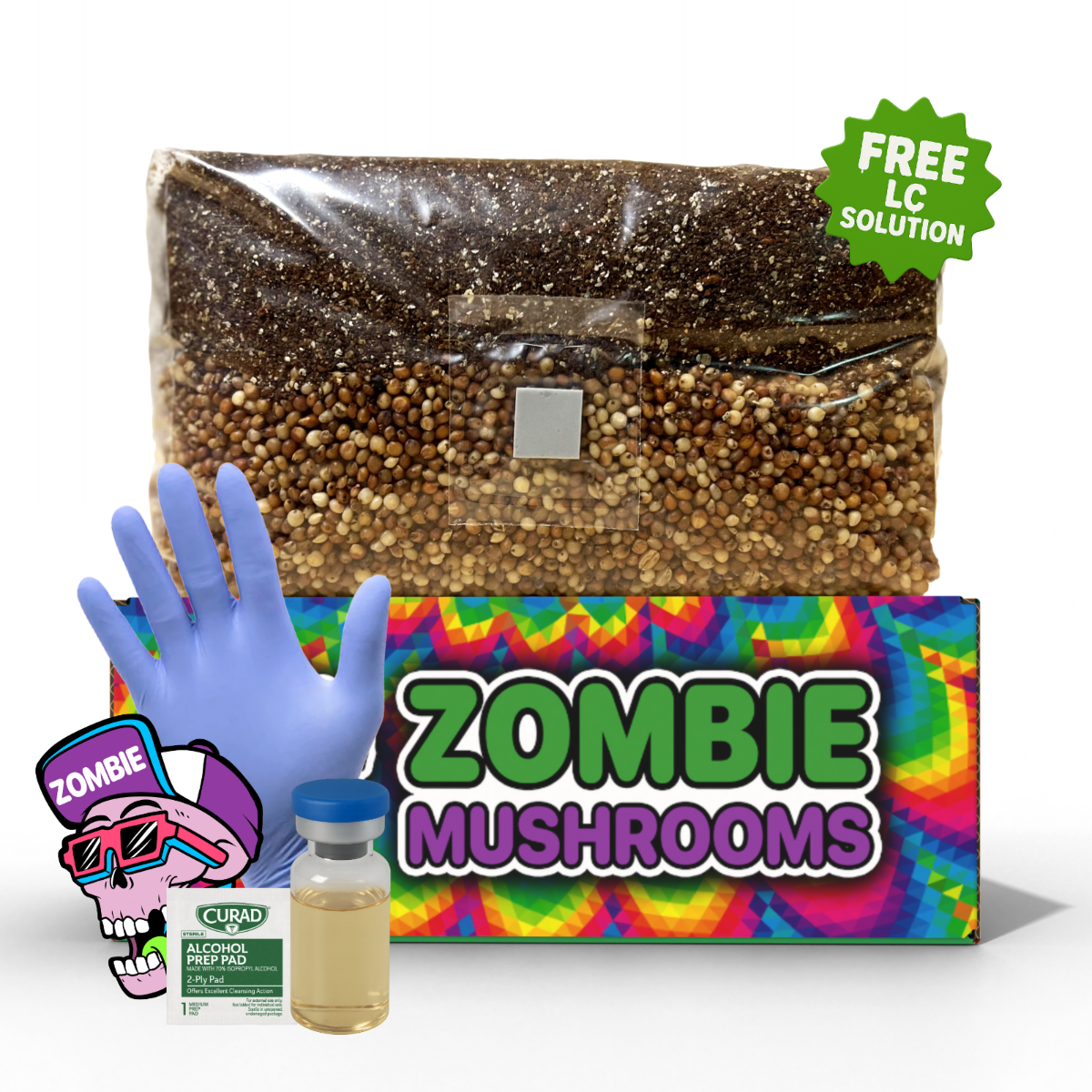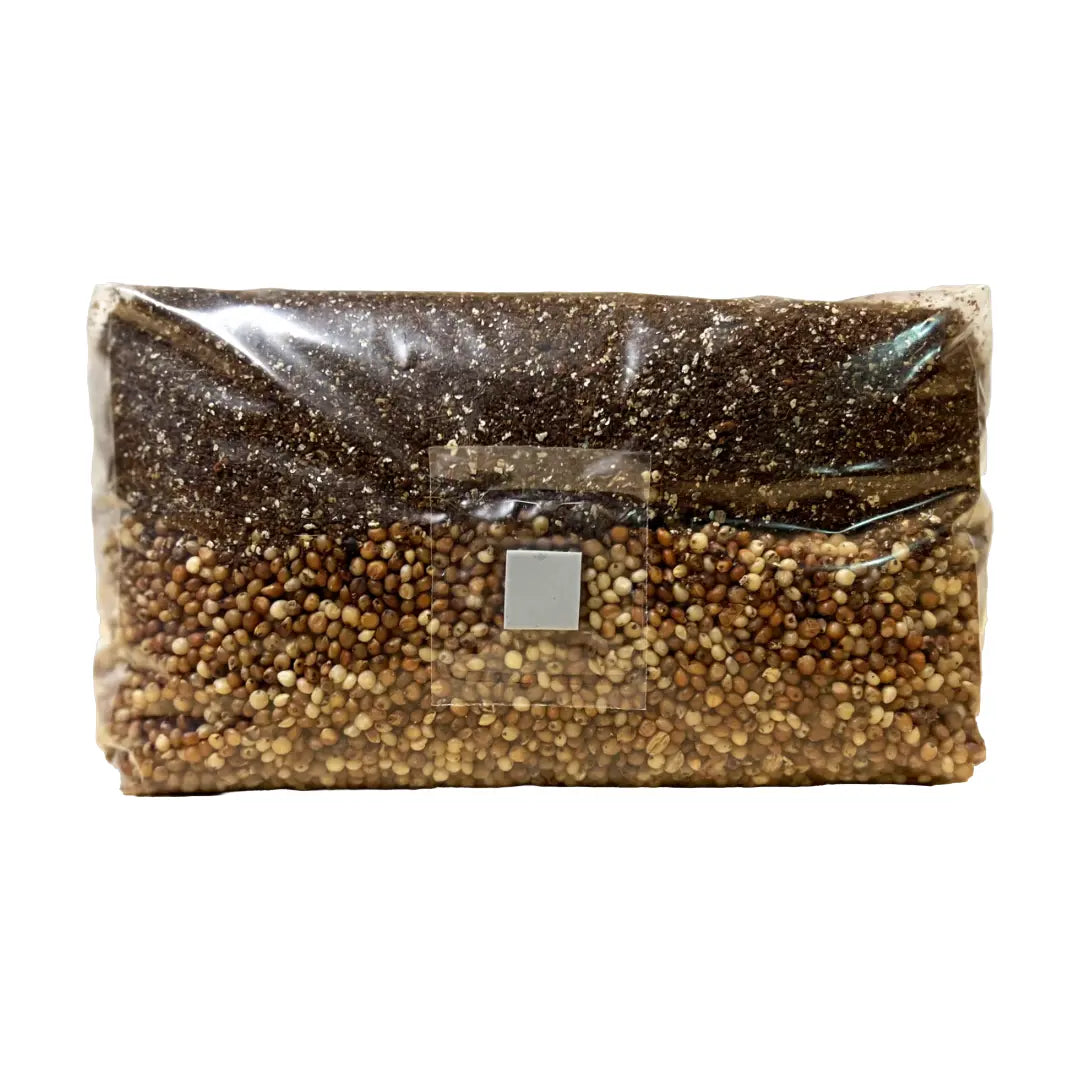⬇️ Prefer to listen instead? ⬇️

- White truffles can fetch prices of up to $4,000 per pound due to their rarity and inability to be cultivated reliably.
- A truffle's aroma is shaped more by its microbial communities and genetics than by soil or location.
- Truffle cultivation has expanded beyond Europe to include farms in the U.S., Australia, and China.
- Over 200 volatile organic compounds give truffles their complex, emotionally evocative scent.
- Many truffle oils use synthetic flavors, not real truffles—consumers should verify ingredient sources.

Truffles: Are They Worth the Hype?
Truffles are nature’s rarest delicacies—luxurious, aromatic, and often shockingly expensive. While chefs rave about them and foodies chase them across seasons and continents, others wonder if these subterranean fungi are more about mystique than flavor. This article looks at what makes truffles so special. It covers how they grow underground, their importance in culture, and why they smell so strong. For those who want to explore fungi cultivation at home in a more accessible way, tools like mushroom monotub kits can provide a practical entry point into the world of gourmet mushrooms. This will help figure out if they live up to the hype.

What Is a Truffle? Unveiling the Underground Fungi
Truffles are a type of edible fungus that grow entirely underground, making them part of a special class of hypogeous fungi. They belong to the genus Tuber within the family Tuberaceae, distinguished from other fungi by their unique life cycle and ecological role. Unlike mushrooms that push above ground to release spores, truffles are buried, relying on animals to unearth and eat them to spread their spores.
These fungi form close ties with the roots of specific trees like oaks, hazels, and beeches. They help each other. The truffles get carbohydrates from the tree. The tree gets minerals and water that the truffle’s roots pull up. Because they depend on each other so much, it’s almost impossible to grow truffles without very controlled places and the right tree partners. This is why people want them so much.
How truffles reproduce is complicated and not fully understood. Reproduction is slow, dependent on specific soil pH, temperature, moisture, and the continual presence of a suitable tree host. Moreover, animals like wild boars and, now more commonly, specially trained dogs are essential for truffle reproduction—sniffing them out, eating them, and dispersing the spores through feces in a process called mycophagy (Zambonelli et al., 2015). This complicated biology helps make them rare and highly valued.

Nutrients Inside Truffles
People want truffles mostly for how they smell and taste in food. But truffles also have good nutrients. These underground fungi are mostly water—about 80%. But the other 20% has nutrients. Truffles have some healthy fats (1 to 6%). They also have a good amount of fiber, plus many different minerals and tiny elements (Sulzbacher et al., 2020).
Among the minerals found in truffles are magnesium, calcium, iron, potassium, and zinc—essential components of any balanced diet. It's interesting that truffles take in minerals from the soil around them. They work like sponges underground, pulling elements from the soil where their trees grow. They take in minerals so precisely that scientists can tell truffle types apart by looking at the elements in them, like nickel, chromium, and copper (Pacioni et al., 2007).
Besides normal nutrients, truffles might also help fight cell damage and even germs. This hints they could have a bigger job than just being food. While not typically consumed in large enough quantities to serve as a major dietary source, their chemical complexity contributes to why chefs and researchers alike are fascinated by them.

The King of Truffles: Tuber magnatum (White Truffle)
When people talk about truffles with great respect, they usually mean the white truffle, or Tuber magnatum. Originating primarily from the Piedmont region of northern Italy (especially around Alba), this truffle features a smooth, pale yellow or cream-colored exterior. Its aroma—musky, garlicky, and undeniably pungent—has earned it the unofficial title of the “diamond of the kitchen.”
One factor that gives white truffles their mythic reputation is their elusiveness. Unlike other truffle species, Tuber magnatum has resisted all efforts to cultivate it reliably (Hall & Zambonelli, 1993). It requires a perfect storm of natural conditions: limestone-rich soil, symbiosis with specific trees, and an untouched ecosystem. The presence of white truffles is so dependent on local forest ecology and microclimate that even the best attempts at simulation have come up short.
As a result, the only way to obtain white truffles is by foraging, typically with the help of expertly trained dogs during a short harvest season from October to December. Their rarity keeps prices sky-high, often ranging from $2,000 to $4,000 per pound depending on size, quality, and availability.
Their flavor, so fragile and aromatic, is best experienced raw and at the end of cooking—shaved thinly over warm dishes where rising steam amplifies their volatile compounds. They're used sparingly but deliver an unforgettable sensory experience. This unique, seasonal delicacy is food at its most luxurious—and its most ephemeral.

The Black Diamond: Tuber melanosporum (Black Truffle)
If the white truffle is the crown jewel, the black truffle, or Tuber melanosporum, is the steadfast knight. Better known as the Périgord truffle due to its commercial origins in France’s Périgord region, this truffle has a darker, rough-textured exterior and an interior marbled with white veins running through its black flesh.
Its aroma is woody, earthy, and deeply umami. Unlike the fleeting glory of the white truffle, black truffles are more robust in both shelf life and flavor, making them versatile in the kitchen. They can be cooked without losing their identity, holding their own in creams, sauces, eggs, and stews.
Perhaps most importantly, this truffle is cultivable under the right conditions. Black truffle cultivation involves inoculating the roots of host trees with truffle spores and nurturing them in specially designed orchards. It is not a short-term undertaking: producers may wait 5 to 10 years before their investment bears fruit (Iotti & Zambonelli, 2006).
France, Spain, and Italy are traditional producers, but cultivation has expanded globally, including into regions of the United States and Australia. Although prices still reach hundreds of dollars per pound, black truffles offer a slightly more accessible alternative for truffle lovers seeking depth without the staggering price tag.

The Everyday Luxury: Tuber aestivum (Summer Truffle)
Known as the summer truffle, or Tuber aestivum, this variety is the most approachable of the prized truffles—both in flavor and in price. Found in many parts of Europe, it looks similar to the black truffle but is far milder in aroma and taste.
The interior is paler, often a light hazelnut color, and the scent is reminiscent of roasted barley or underbrush. These truffles are more flexible in growing conditions, and unlike other premium species, they’re available in greater quantities. Summer truffles have successfully been farmed using inoculated trees, making them more accessible to hobbyists and new truffle farmers (Bonito et al., 2010).
While chefs sometimes use truffle oil or truffle salt for everyday dishes, the summer truffle provides a natural, fresh alternative. They make scrambled eggs, cheeses, risottos, and even salads taste better in a subtle way. Though they lack the potence of white or Périgord truffles, their culinary potential should not be underestimated.

Meet the Lesser-Known (but Worthwhile) Truffles
Beyond the “big three,” several lesser-known truffles deserve attention
-
Tuber borchii (Bianchetto Truffle): Found in Italy and Eastern Europe, this truffle matures in early spring. Though similar in appearance to the white truffle, it has a spicier, more garlicky aroma, making it a popular substitute at a more affordable price.
-
Tuber brumale (Winter Black Truffle): With a robust scent and a pungent flavor, this truffle is often used in processed products like butter, oils, or sauces. Its longer shelf life and bold flavor enable it to stand strong in compound preparations.
-
Tuber indicum (Chinese Black Truffle): Often sold as a cheaper alternative to the Périgord truffle, it’s commonly criticized for its bland taste and questionable marketing. Sometimes passed off as the real thing, this truffle's quality is debated by culinary professionals (Trappe et al., 2001).
-
Tuber uncinatum (Burgundy Truffle): A close relative of the summer truffle, harvested in autumn, with more nuanced, nutty, and cocoa-like notes. Preferred by chefs in colder northern climates, especially for dishes where subtlety shines.
These species offer different aromas, textures, and price points—and represent a growing opportunity for expanded culinary creativity.

Why Truffle Hunting Is an Art and a Science
Finding a truffle is like looking for something valuable underground—except you need a very good sense of smell or a very well-trained animal. The traditional pigs once used in Europe have largely been replaced by dogs. Dogs are less likely to damage the delicate truffles during digging and are easier to train and control.
Truffle hunting is strictly seasonal and environmentally dependent. Rainfall, temperature swings, and tree stress cycles influence when and where truffles emerge. The work is subtle: seasoned hunters read the forest floor, observe tree behavior, and rely on experience passed down through generations.
Much like sustainable fishing or wild mushroom foraging, responsible truffle hunting emphasizes ecology. Overharvesting damages truffle ecosystems and threatens future growth. Laws in Europe and elsewhere regulate harvest periods, permissible tools, and required permits, all part of ensuring truffles remain viable for generations to come (Stamets, 2000).

What Gives Truffles Their Powerful Aroma?
The strong scent of truffles is not just one thing. It comes from over 200 volatile organic compounds (VOCs). Among the most dominant is dimethyl sulfide (DMS), which imparts that unforgettable earthy, musky odor. Other compounds include androstenone, also found in human sweat, and glutamate precursors that give the umami punch (Splivallo et al., 2015).
It's interesting that a truffle’s aroma depends more on its genetic makeup and the microbes living with it than on the soil or place it grows (Mello et al., 2021). These compounds have jobs in nature: they attract animals to help spread spores. And their complexity makes people feel things and want to eat.
The truffle's aroma is not just enjoyable—it’s been studied for its mood-enhancing and even mildly aphrodisiac qualities. This could explain the enduring romantic and medicinal associations across centuries of human consumption.

The Trouble with Truffle Preservation
Truffles begin to lose their magic the moment they’re unearthed. Their volatile compounds dissipate rapidly, and within a few days, even the best specimen will falter unless stored properly.
While refrigeration can slow decay, freezing leads to texture loss and potential aroma degradation. Some producers resort to vacuum sealing or oil infusion, but effectiveness varies. Even truffle oils—ubiquitous in upscale menus—rarely contain real truffle. Most rely on synthetic compounds like bis(methylthio)methane to recreate the signature scent (Pyrenes et al., 2010).
Consumers seeking to buy truffle products should practice due diligence—read the ingredient label, ask questions, and buy from reputable vendors that disclose their sourcing.
Truffles Through History and Across Cultures
Truffles have a great history connected to human culture
- Ancient cultures like Egyptians and Greeks treasured truffles for their medicinal and spiritual significance.
- Romans categorized them as aphrodisiacs and status symbols, consumed at elite banquets.
- Medieval Europe saw suspicion toward truffles, with some considering them unholy or unnatural.
- French enlightenment and royalty attempted cultivation during the reign of Louis XIV, paving the way for modern trufficulture.
- The 19th century boom in France introduced plantations and reestablished truffle farming as a science (Hall et al., 2007).
Now global, truffles are grown in over a dozen countries, with innovation intersecting cultural tradition.

Buyer Beware: Fakes, Frauds, and Fake Hype
Given the high market demand and tight supply, the truffle world is rife with fraud. Cheap substitutes—particularly Tuber indicum—are imported from China and misrepresented as premium European truffles. Others are simply stale or aroma-enhanced.
Tips to avoid being duped:
- Buy from vetted purveyors or reputable gourmet markets
- Check labeling for harvest dates and scientific names
- Ask about ethics: How was it foraged? Is it a cultivated truffle?
- Trust your nose—fresh real truffle has a richly layered scent that’s hard to fake
(Trappe et al., 2001)

Can You Grow Your Own?
Yes, especially if you’re willing to invest time and patience. Summer truffles (Tuber aestivum) are the best starting point for amateurs. Unlike their more temperamental cousins, they’ve been successfully grown on small plots using inoculated tree seedlings.
Still, cultivating truffles is not like growing shiitake or oyster mushrooms. It's a multi-year commitment that needs the right soil pH (alkaline), access to host trees, good weather, and nature working together.
For those who stick with the process—and partner with trusted fungal labs—harvesting your own underground delicacies can be a deeply satisfying achievement.
Whether you enjoy them in a risotto or hope to find your own, truffles are more than just a quick treat. They connect us to different parts of nature, food, and taste. Choose wisely, taste slowly, and indulge consciously.



